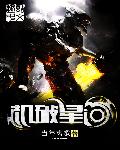高大英俊,帅气多金。
In Western culture, the ideal image of masculinity has often been portrayed as strong, rugged, and independent. From movies to advertisements to fashion magazines, the image of the "ideal man" is often depicted as tall, muscular, and confident. One of the most iconic figures of Western masculinity is the cowboy. With his rugged exterior, stoic demeanor, and ability to handle any situation that comes his way, the cowboy has long been held up as the epitome of masculinity in American culture. From the days of the Wild West to modern-day western films, the cowboy represents strength, resilience, and a sense of adventure that is often associated with masculinity.Another popular image of masculinity in Western culture is the superhero. With their superhuman strength, courage, and sense of justice, superheroes like Superman, Batman, and Captain America embody the qualities of the ideal man – strong, brave, and always ready to defend the weak and fight against evil. These characters have become symbols of heroism and masculinity in Western culture, inspiring generations of young boys to aspire to be like them.In addition to fictional characters, real-life figures in Western culture also exemplify the ideals of masculinity. Athletes like LeBron James, Cristiano Ronaldo, and Tom Brady are held up as role models for their physical prowess, competitive spirit, and ability to perform under pressure. These athletes embody the values of strength, determination, and success that are often associated with masculinity in Western culture.In terms of fashion and style, Western men are often portrayed as rugged and casual. The classic image of the American man is one who is dressed in jeans, a t-shirt, and a leather jacket – a look that is both practical and stylish. Western men are also known for their love of accessories like watches, sunglasses, and hats, which add an air of sophistication and masculinity to their look.In terms of behavior, Western men are often expected to be assertive, confident, and independent. They are encouraged to take charge, make decisions, and assert their authority in various situations. In relationships, Western men are expected to be protective, supportive, and respectful towards their partners, embodying the qualities of a true gentleman.Despite the pressure to conform to traditional ideals of masculinity, there is also a growing movement in Western culture towards redefining what it means to be a man. Men are encouraged to show vulnerability, express their emotions, and challenge traditional gender norms. This shift towards a more inclusive and diverse definition of masculinity is reflected in popular culture, with the rise of male celebrities who embrace their sensitive side and advocate for gender equality.In conclusion, the image of masculinity in Western culture is complex and multifaceted. From the rugged cowboy to the superhero to the modern-day gentleman, Western men are expected to embody a variety of qualities that are often contradictory. While traditional ideas of masculinity still hold sway in Western culture, there is also a growing movement towards redefining and expanding what it means to be a man in today's society. Ultimately, the image of the ideal man in Western culture is one that is evolving, diverse, and inclusive.























